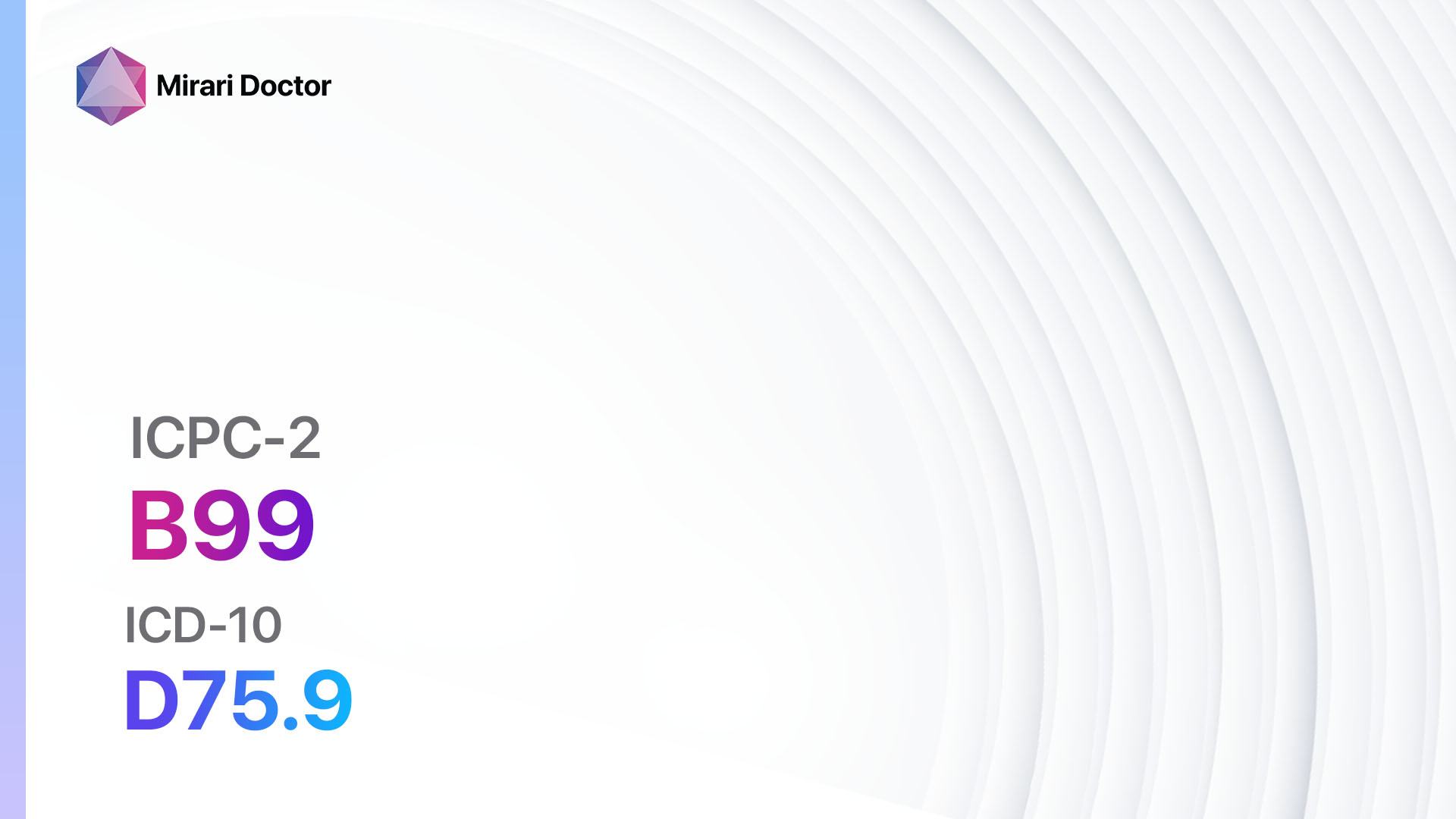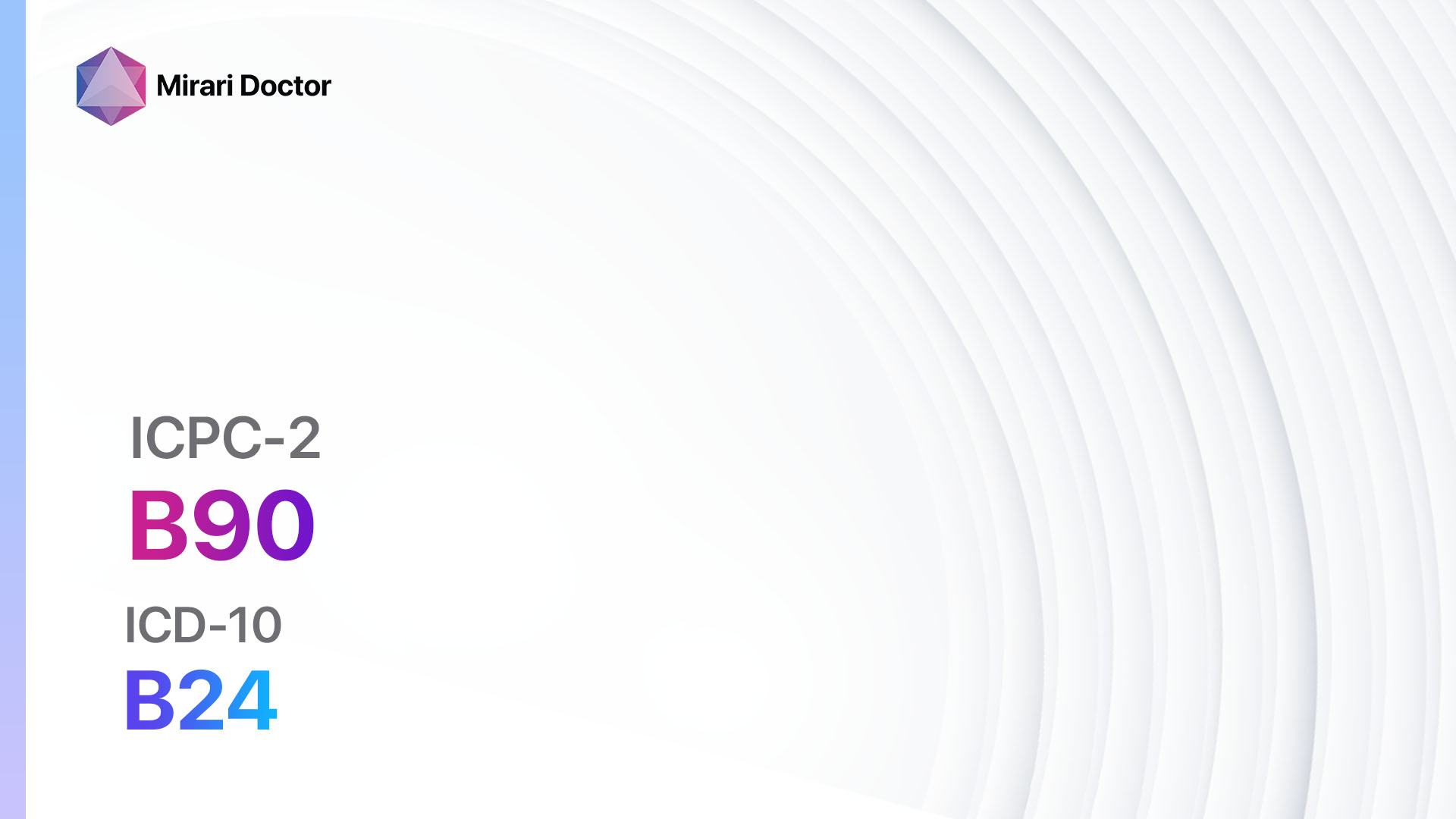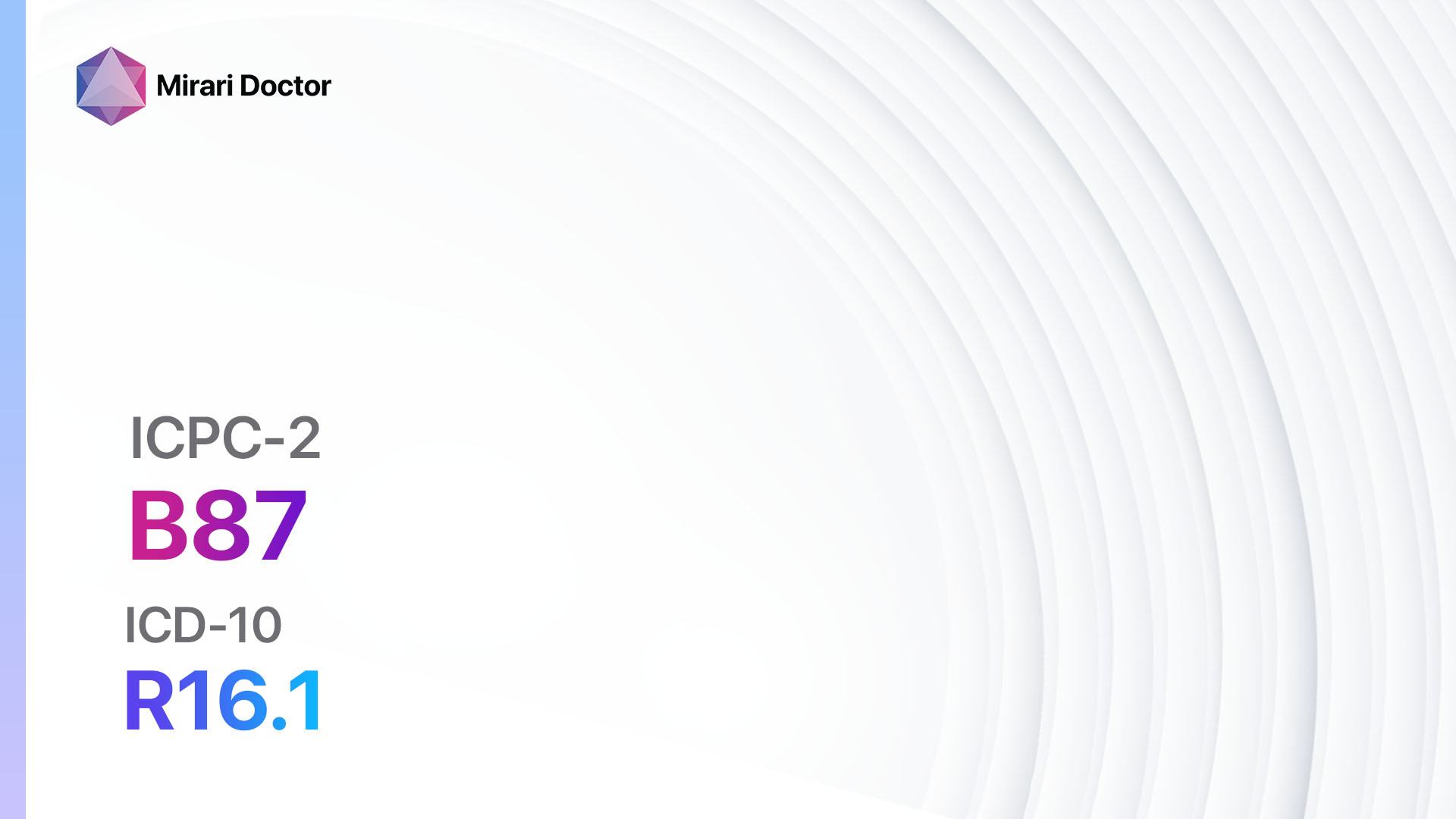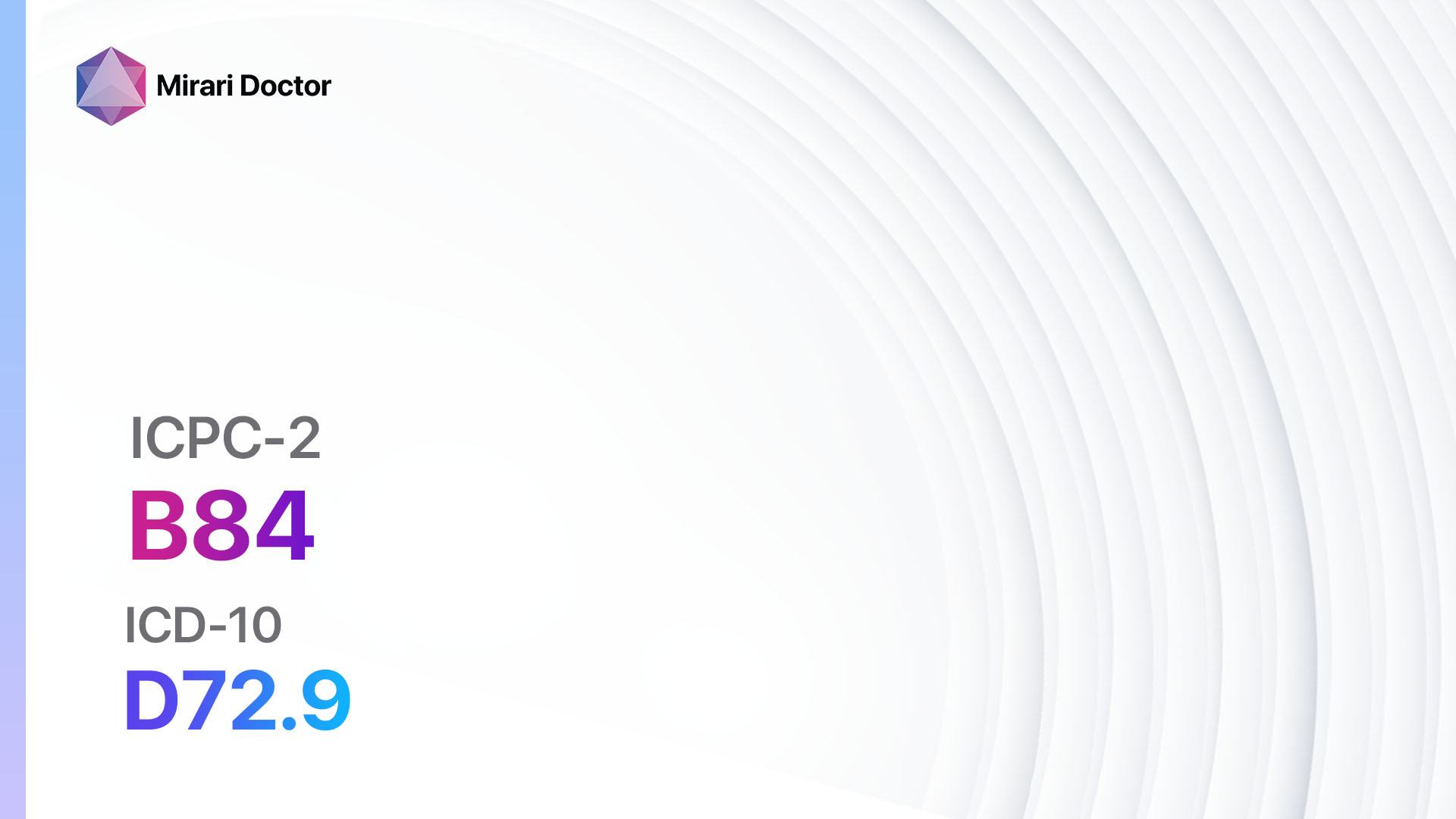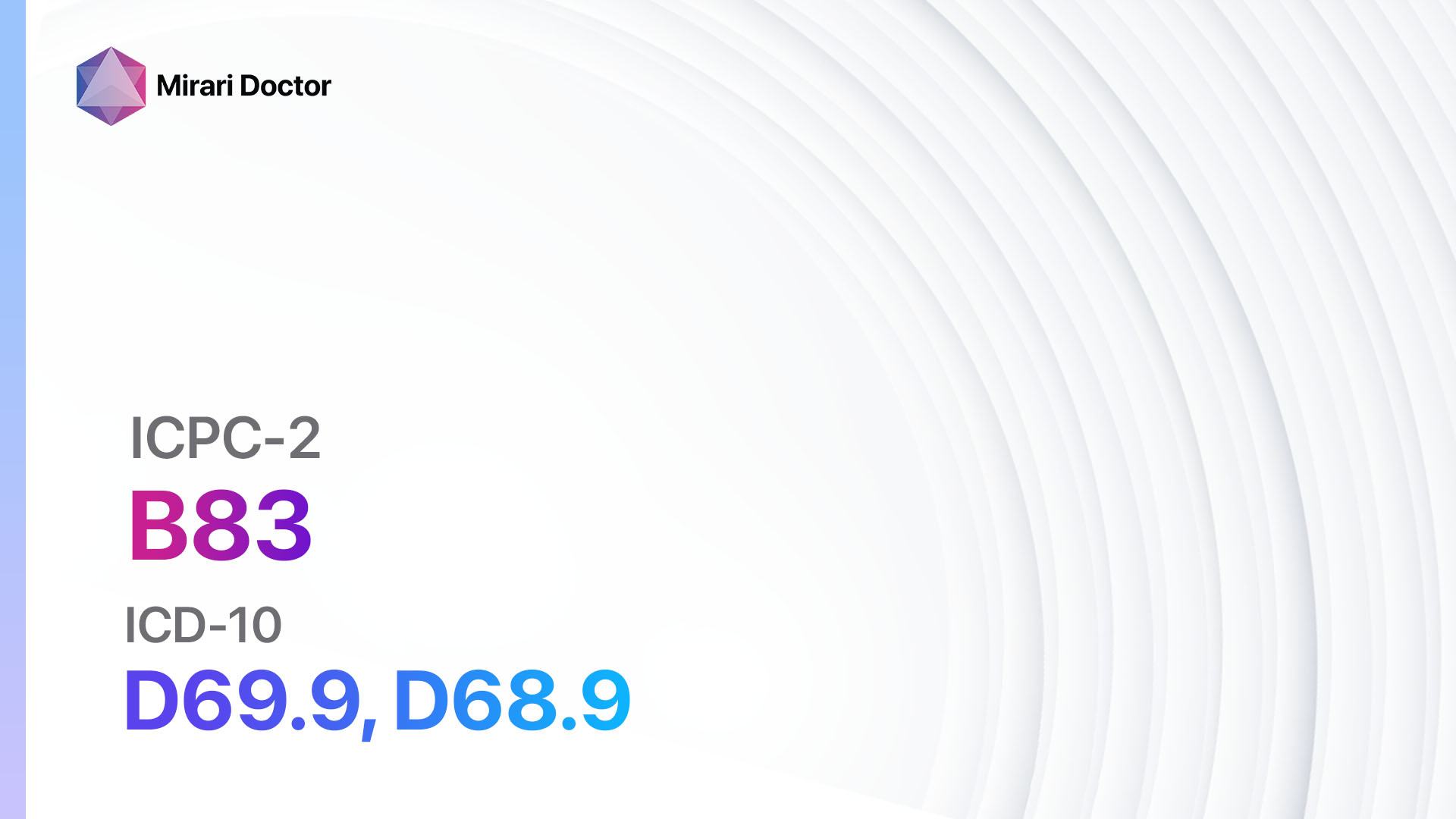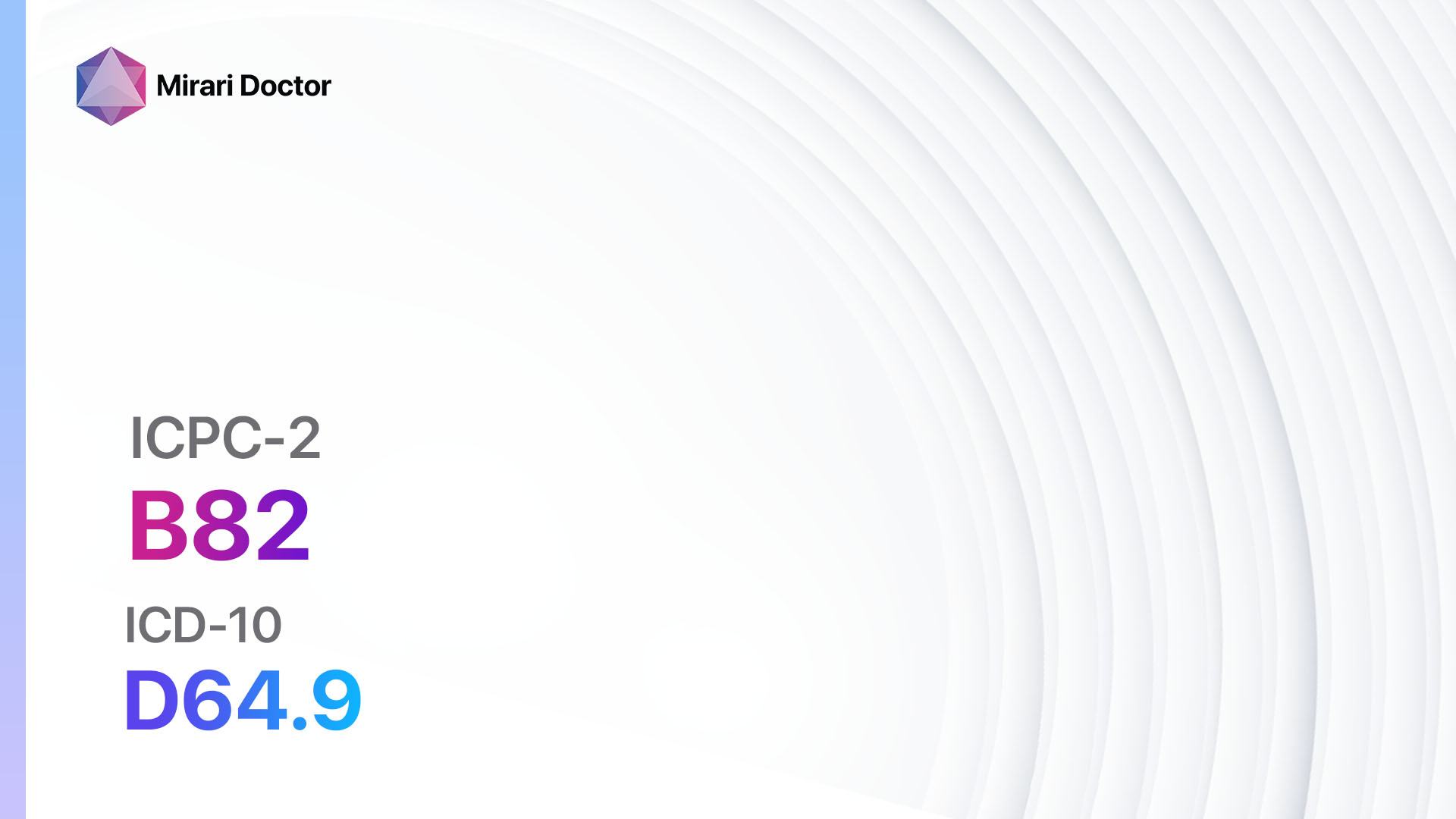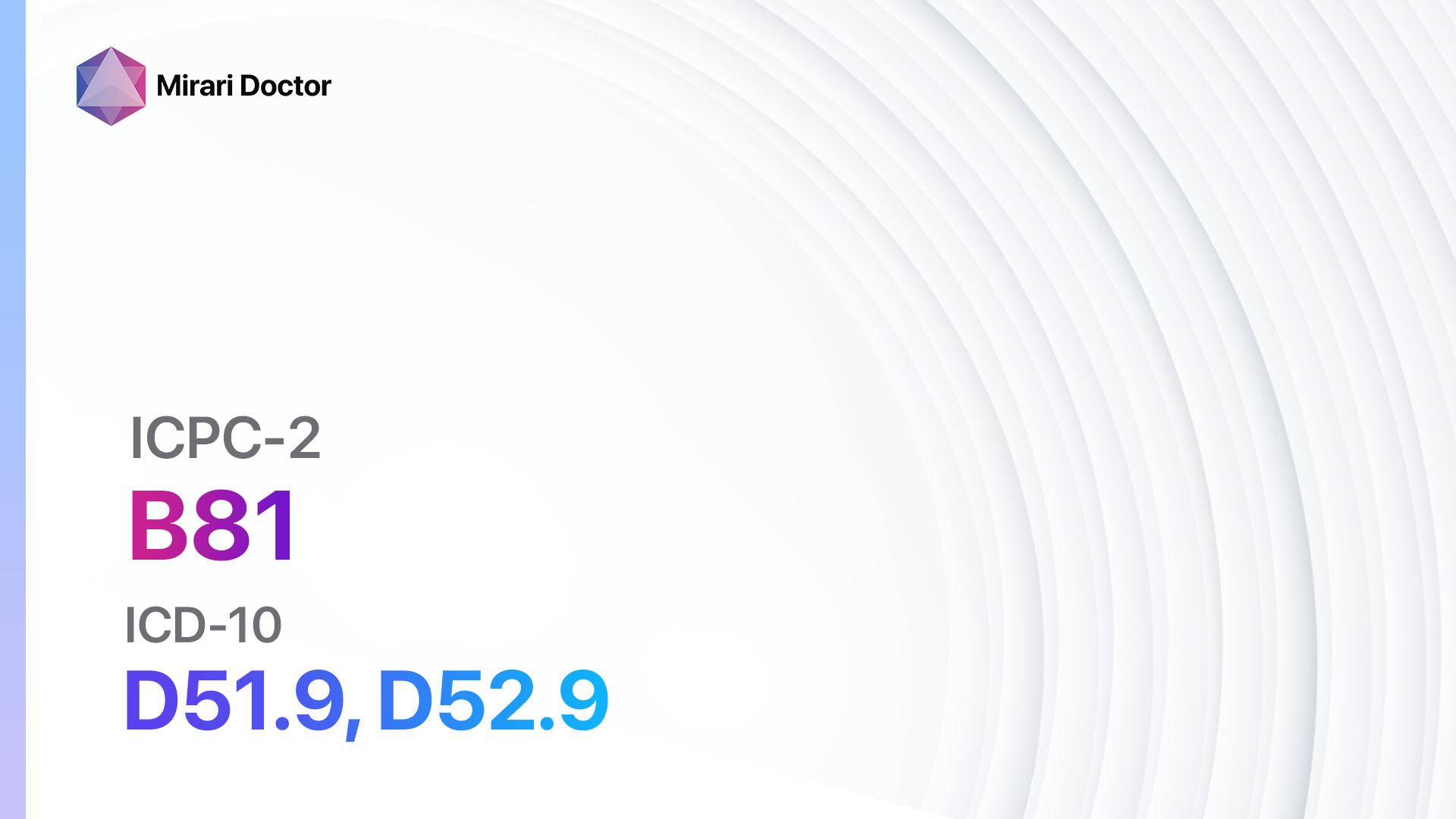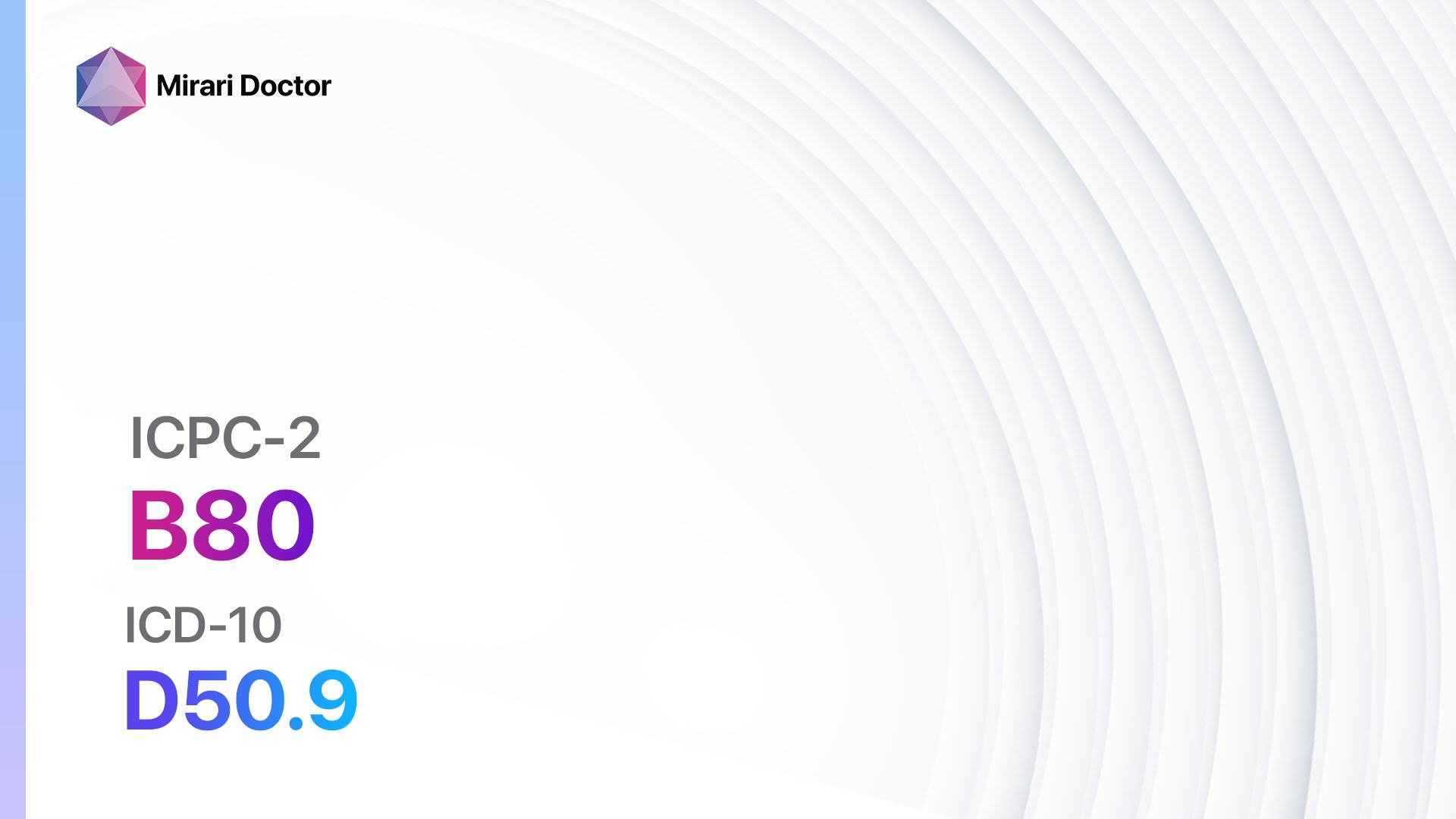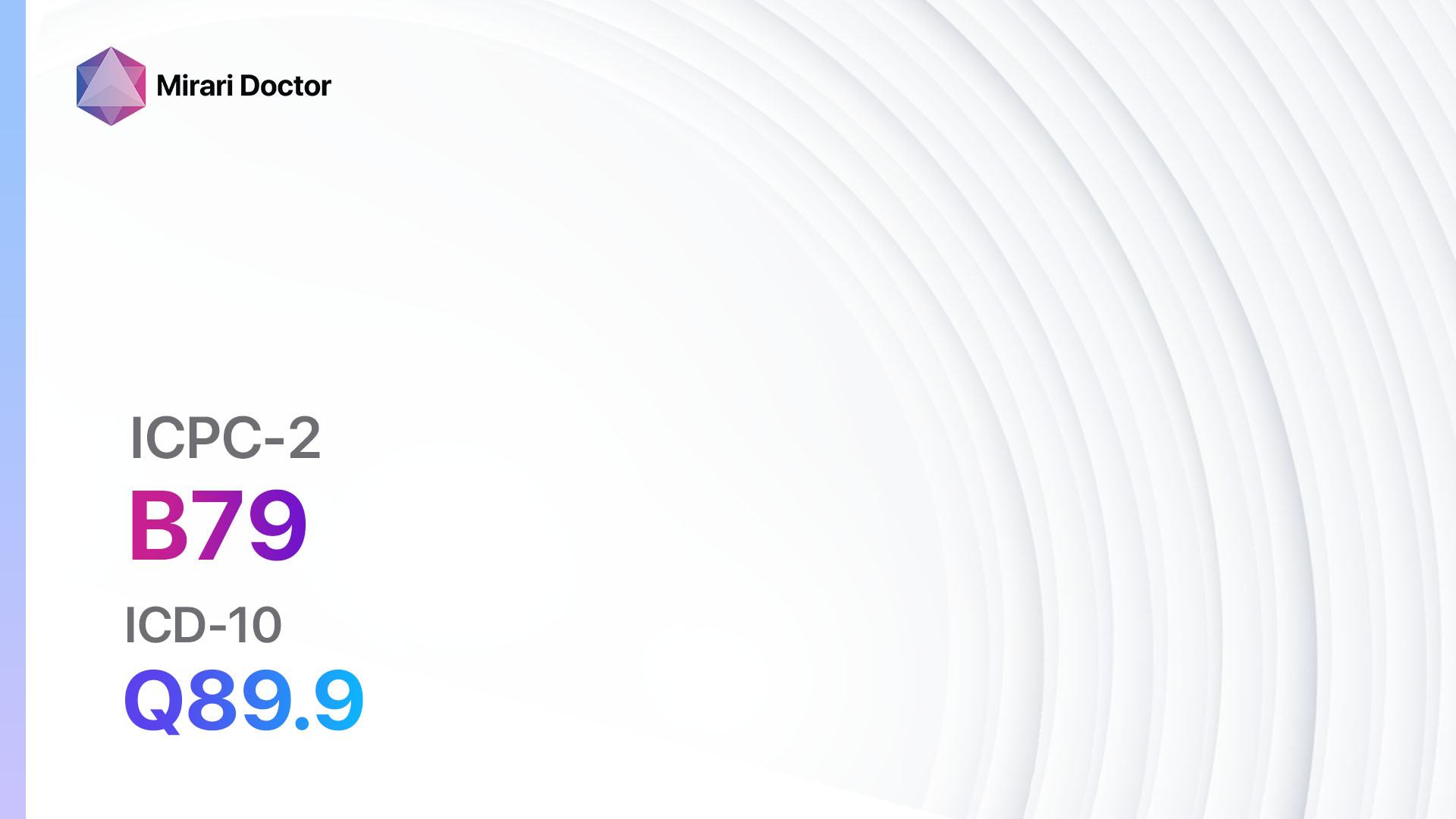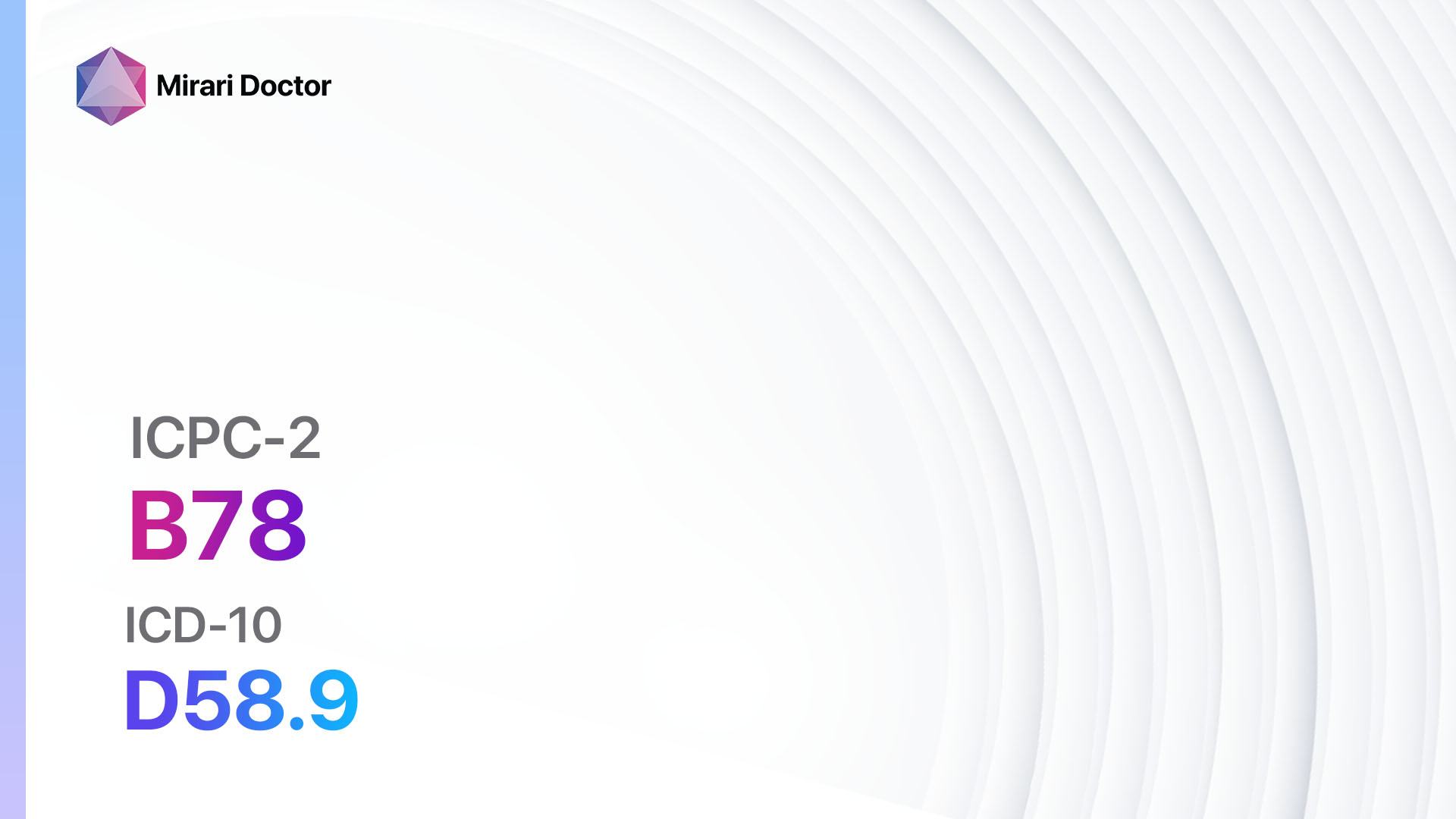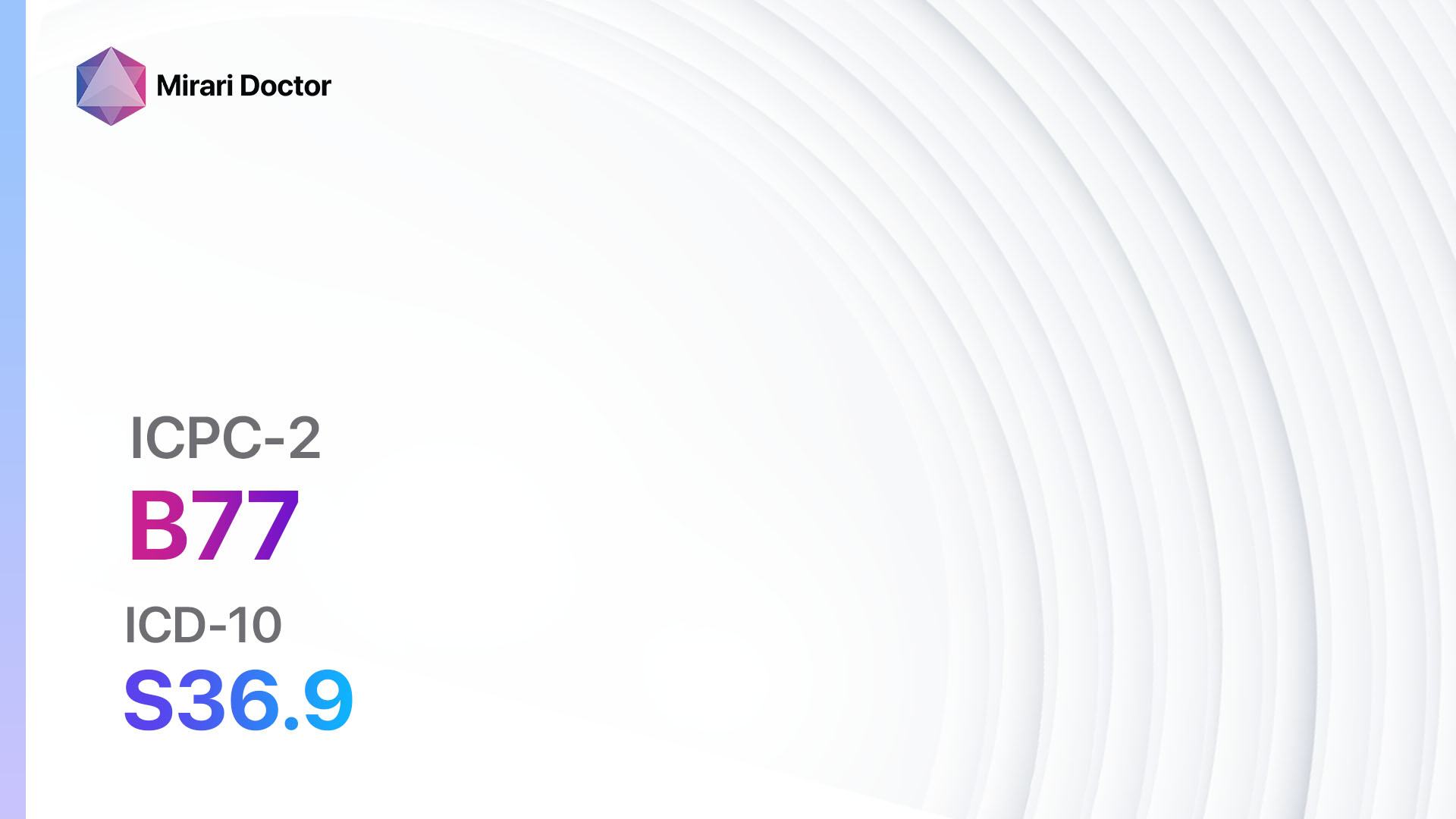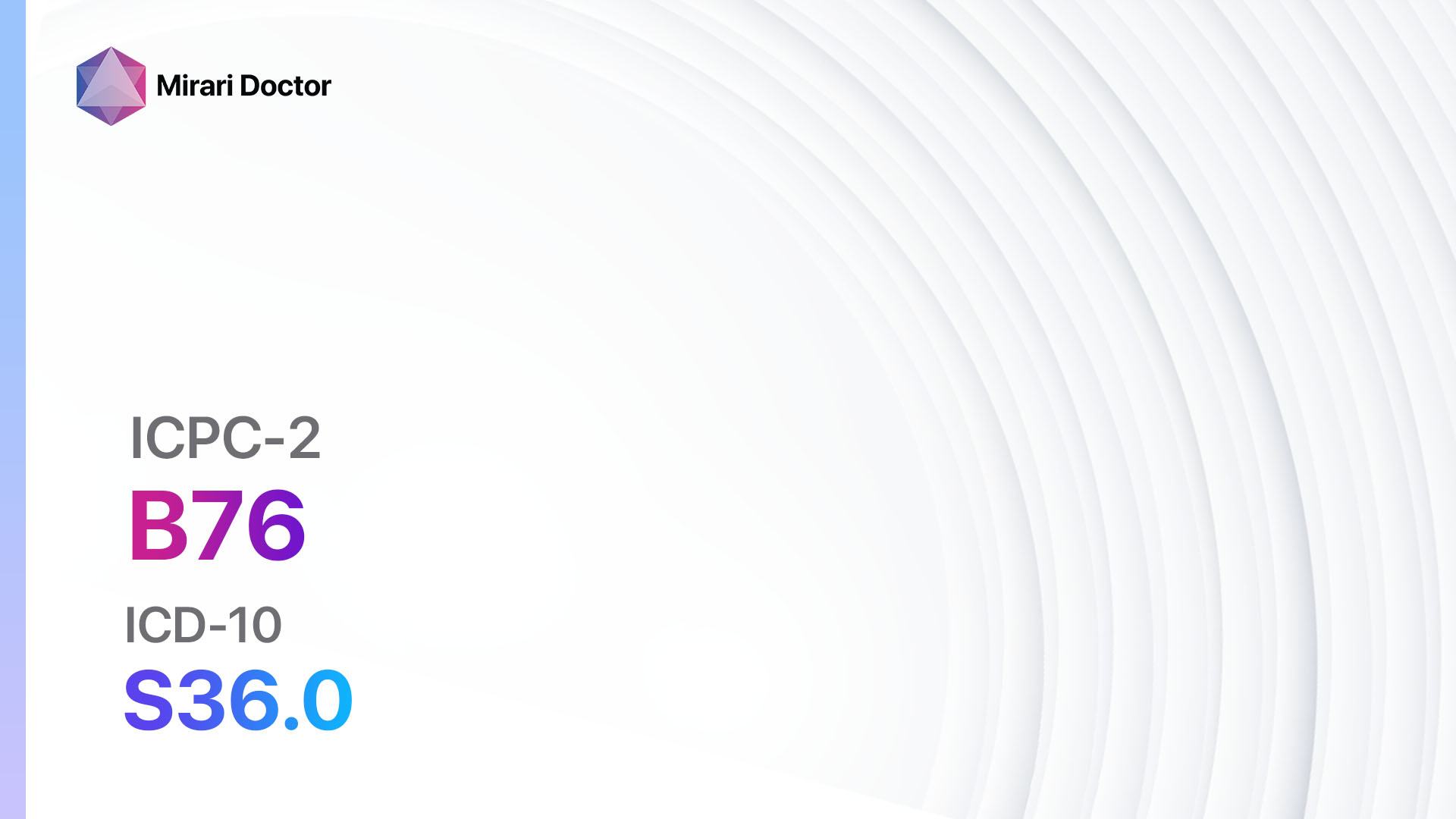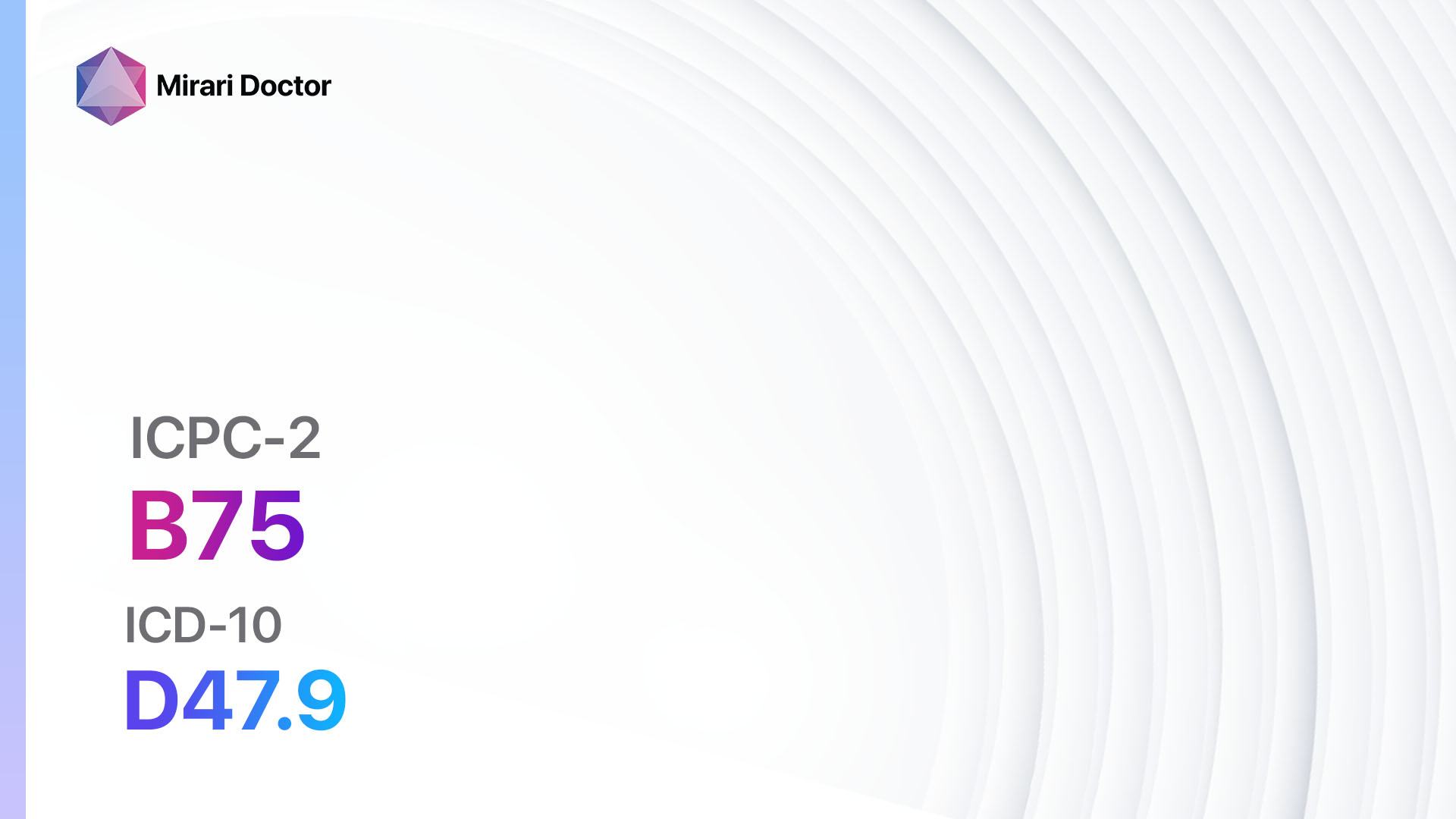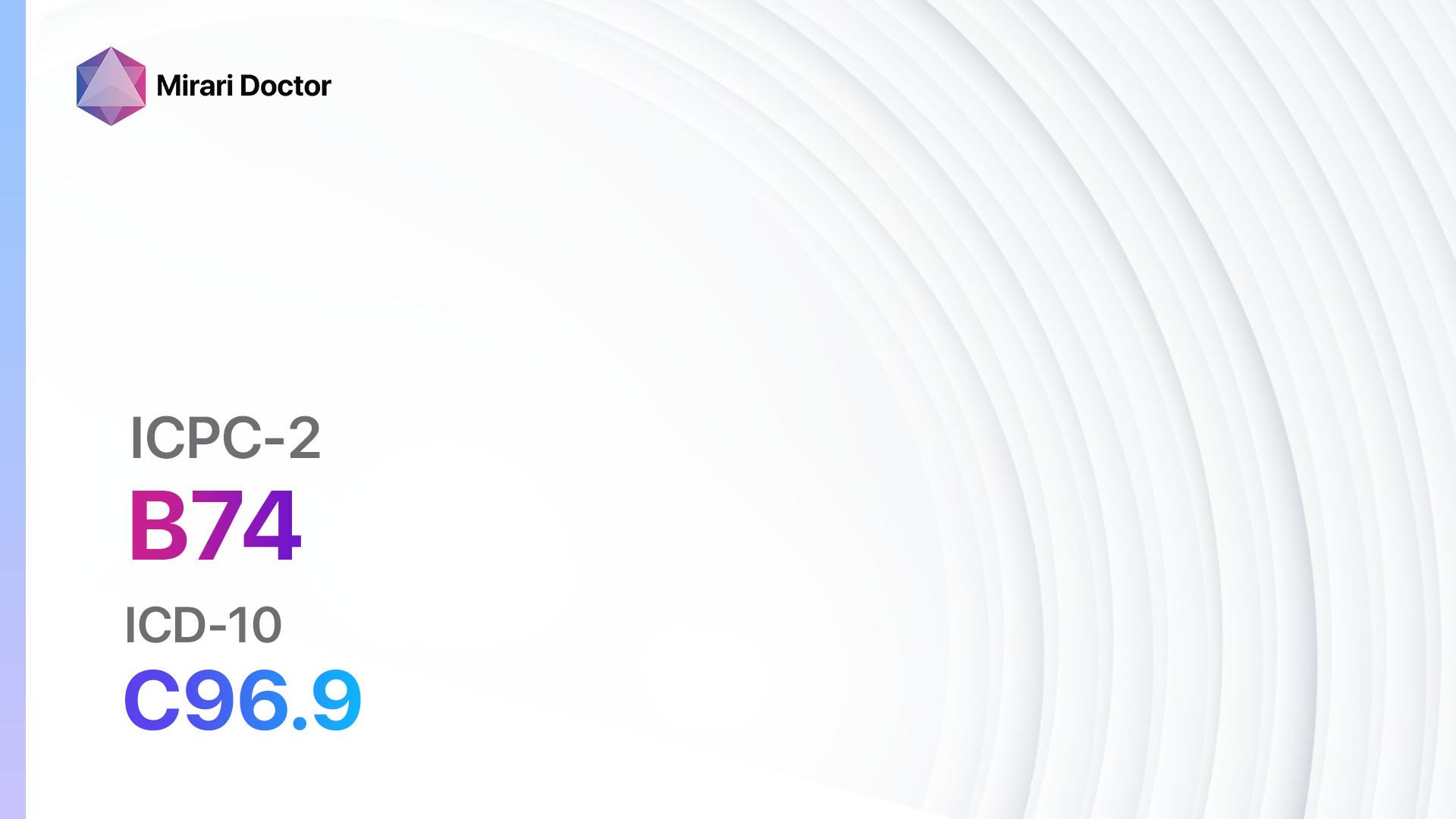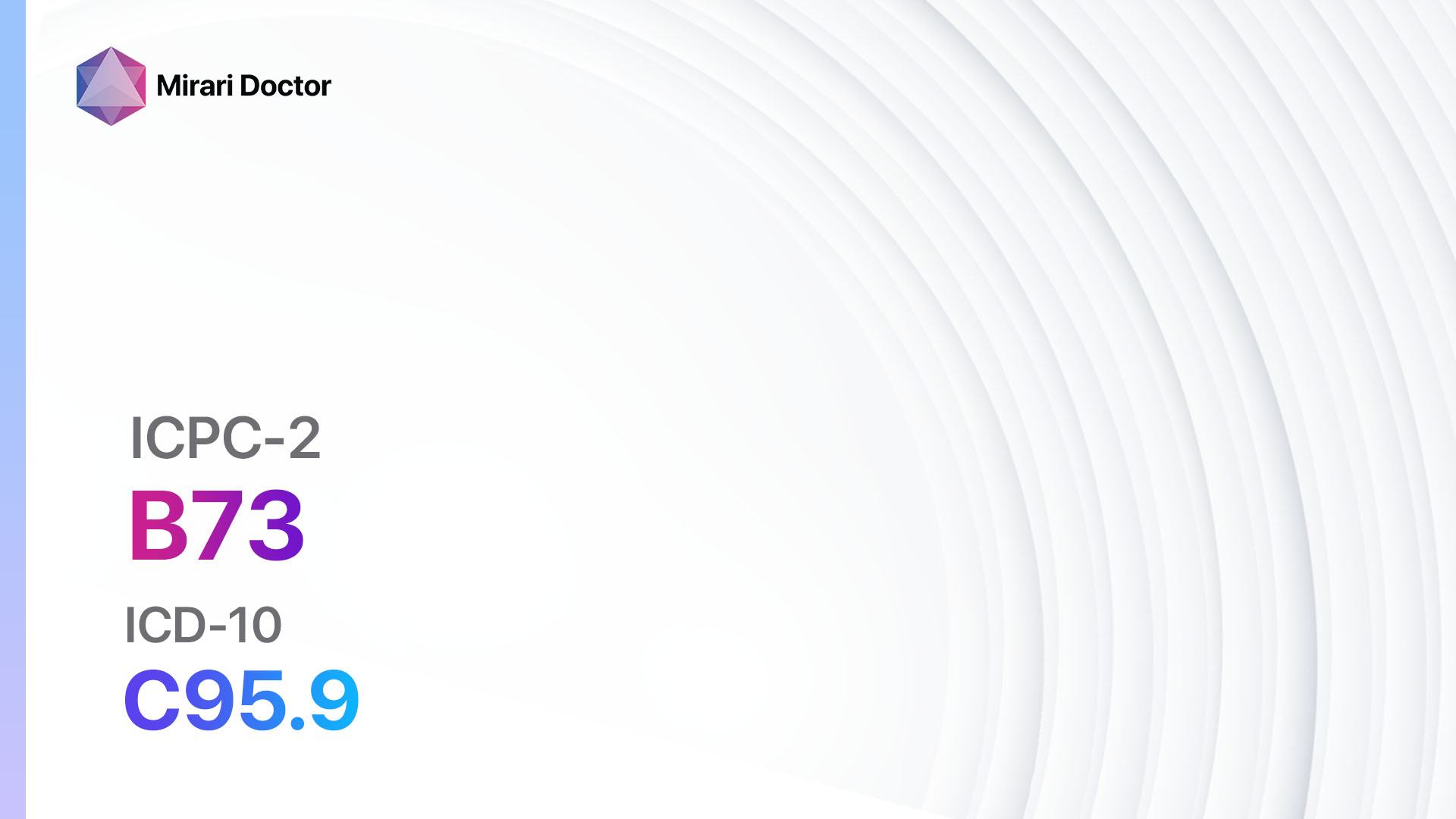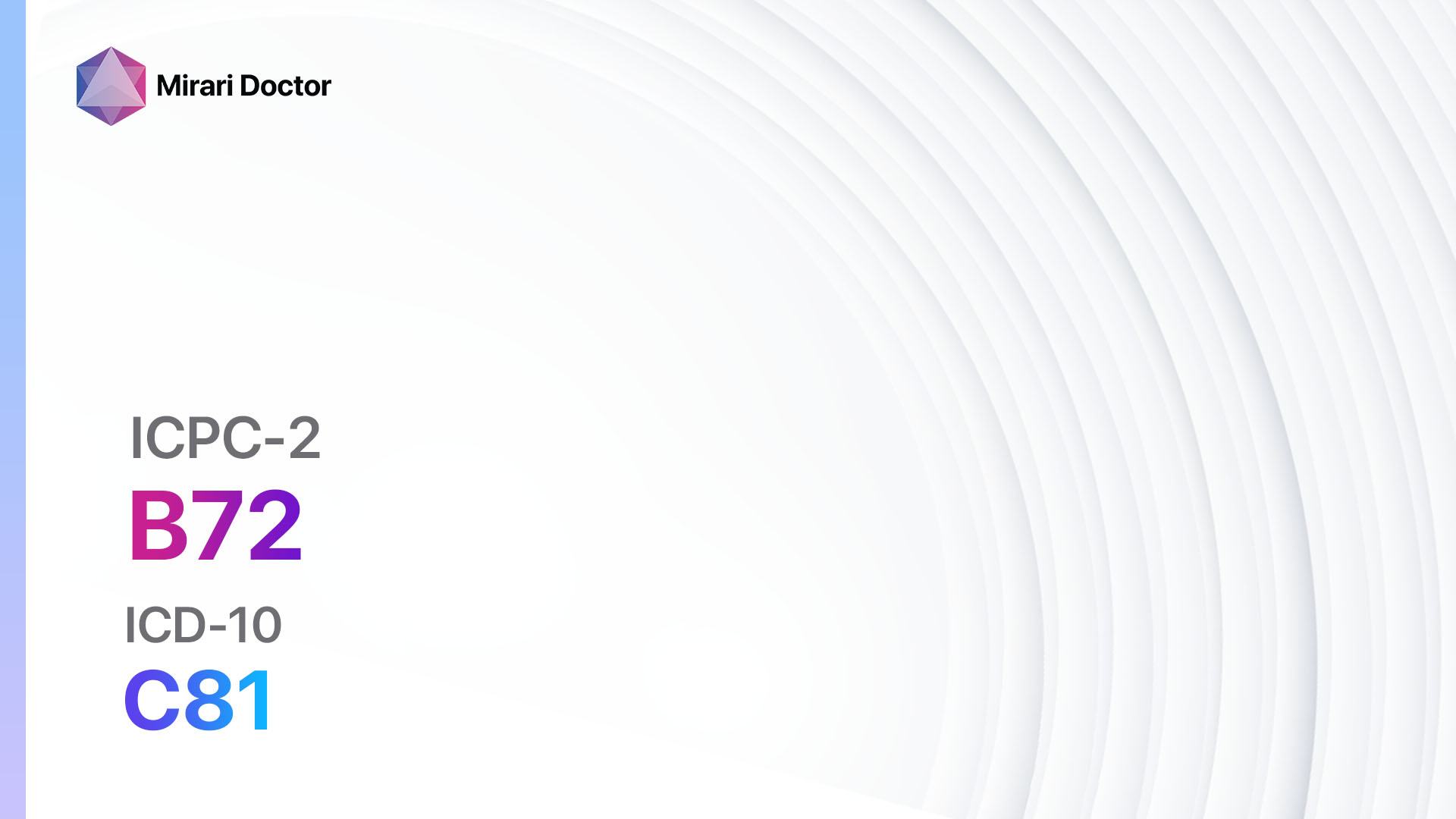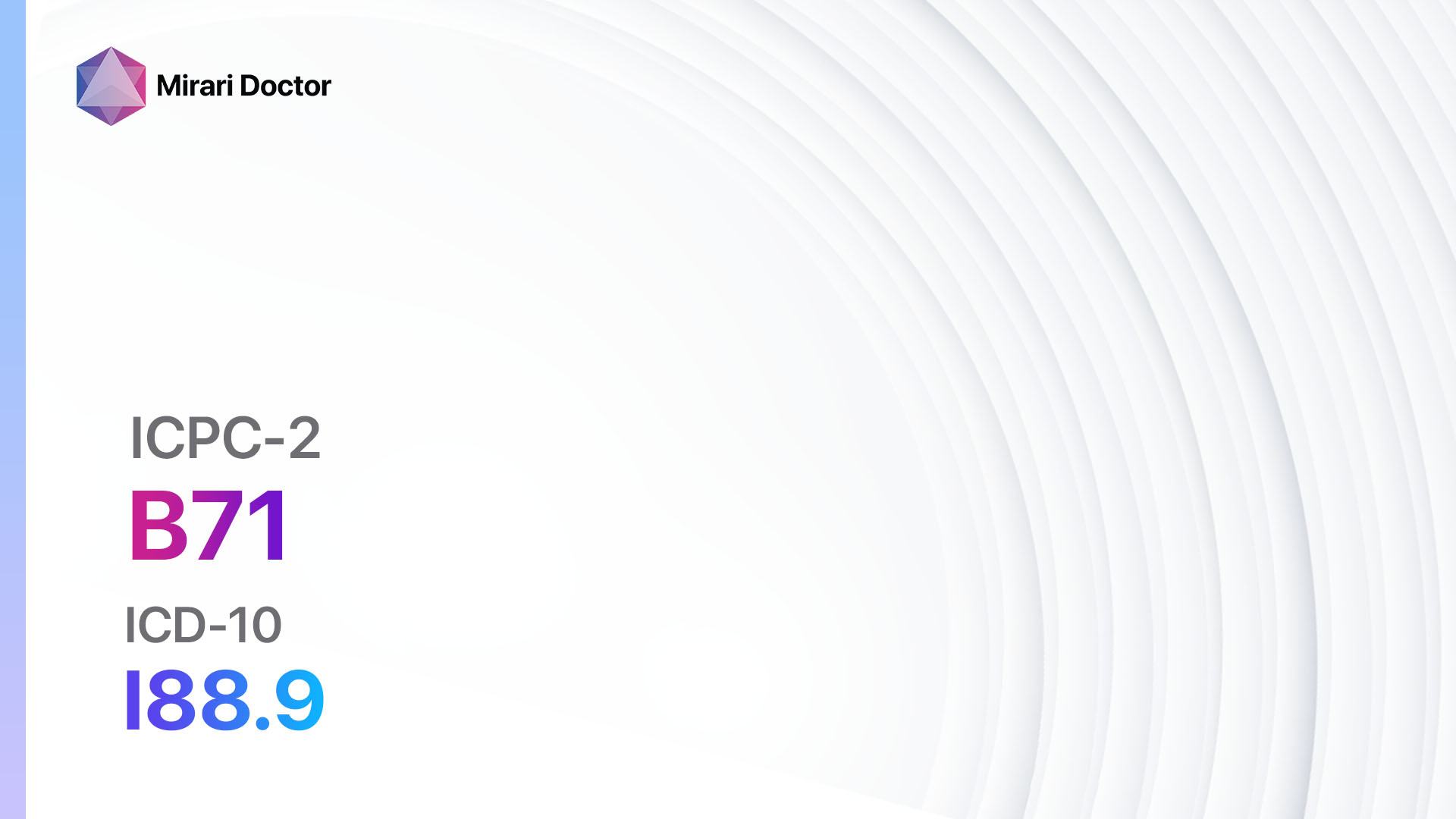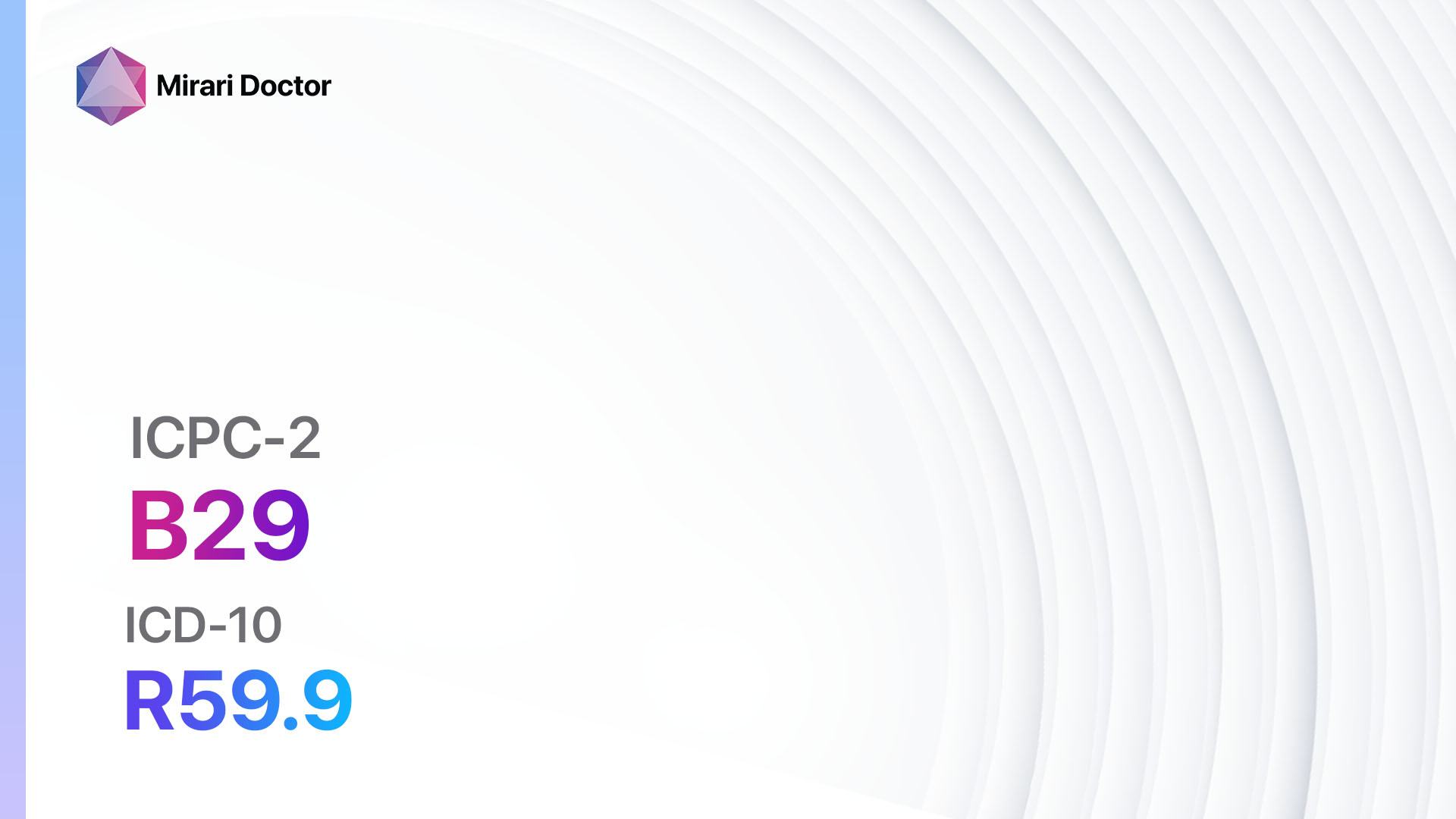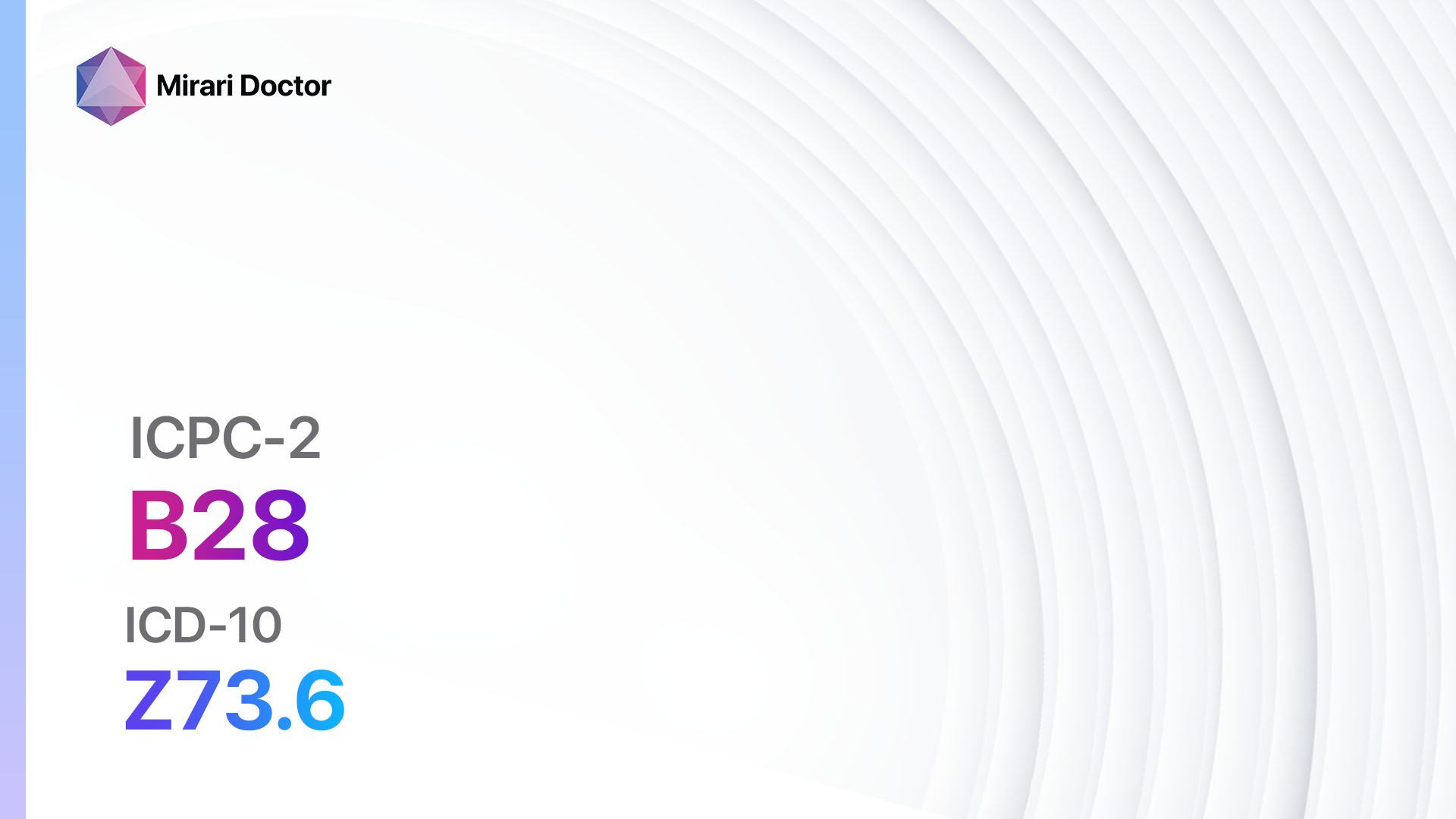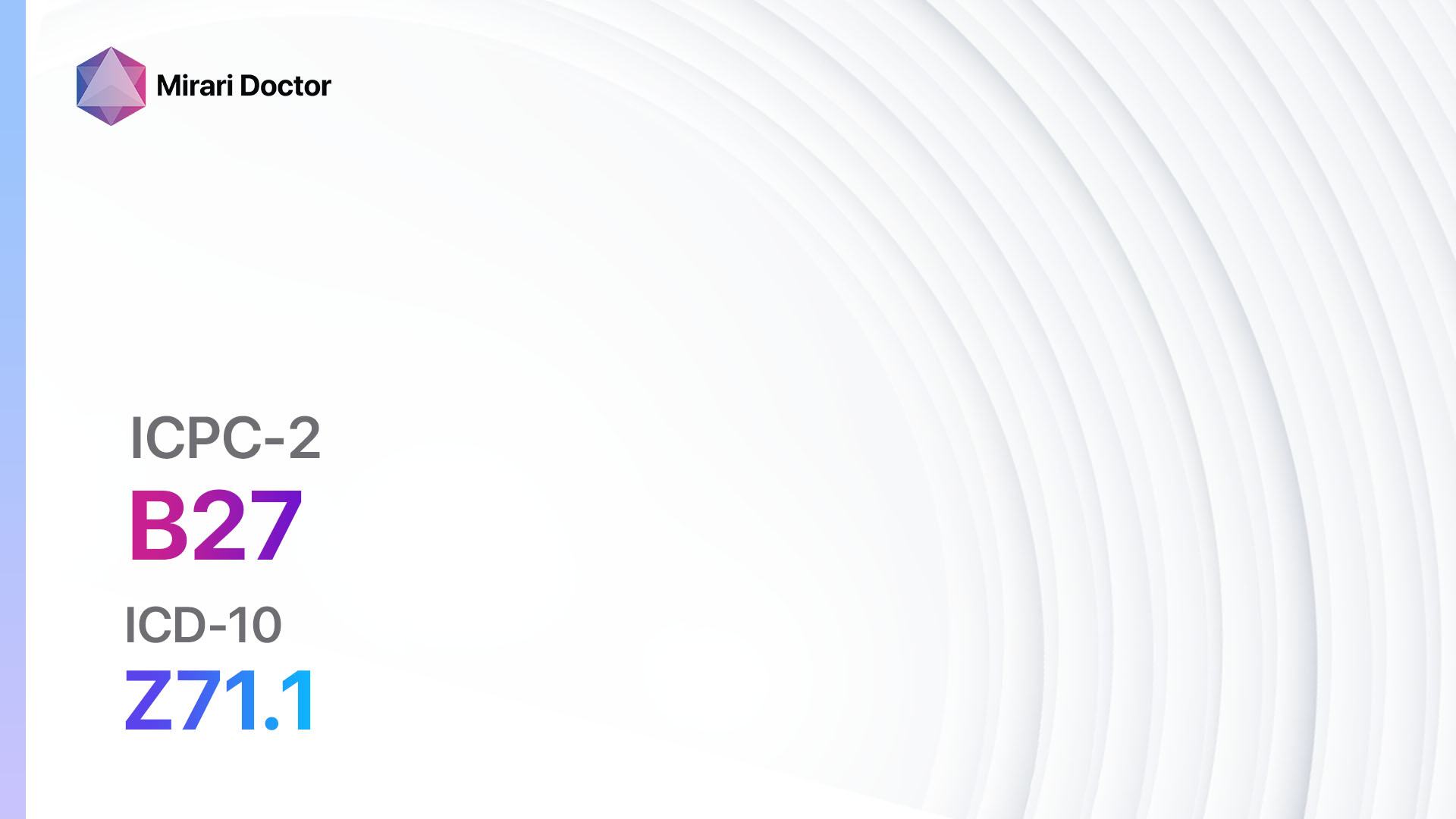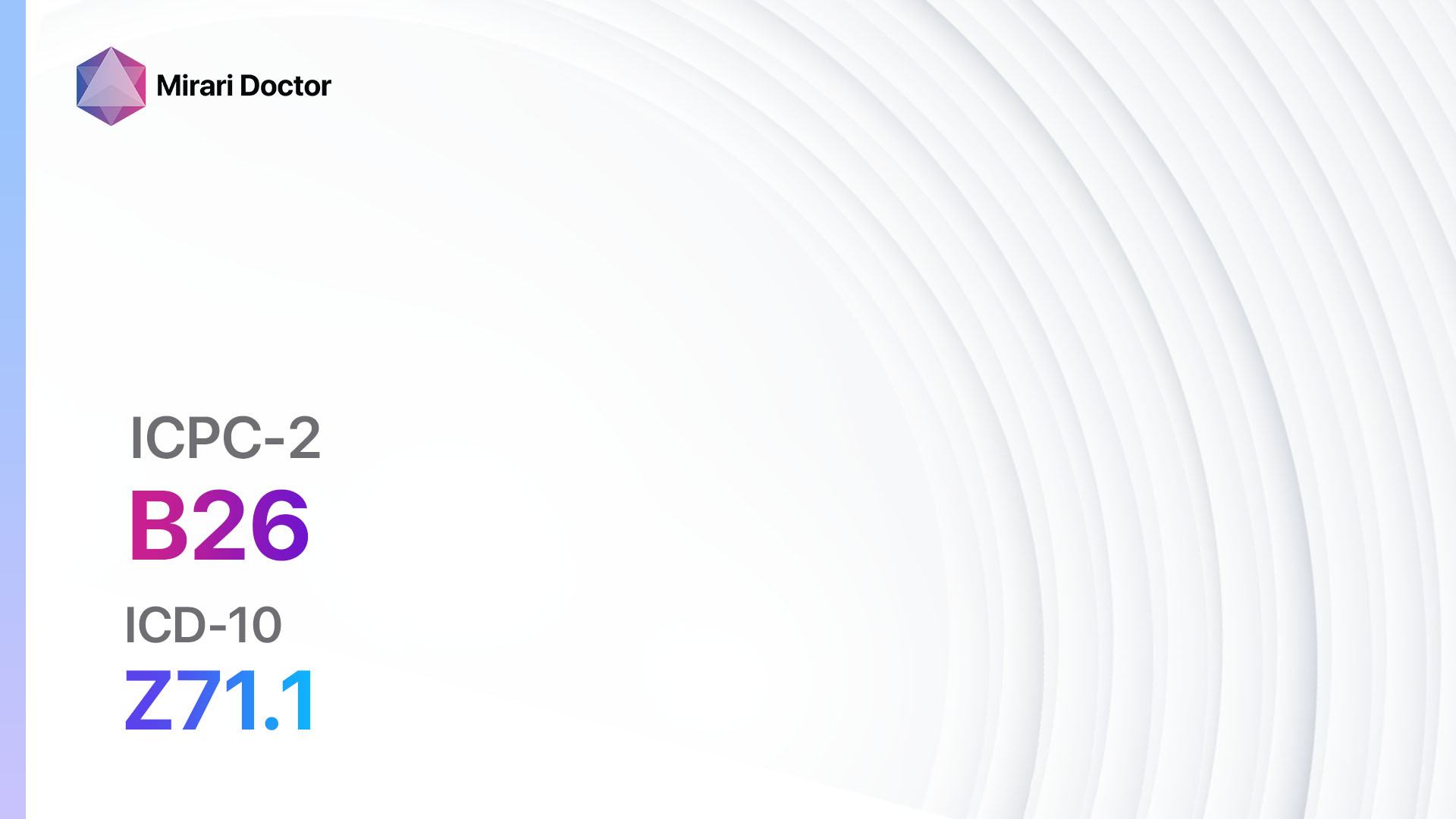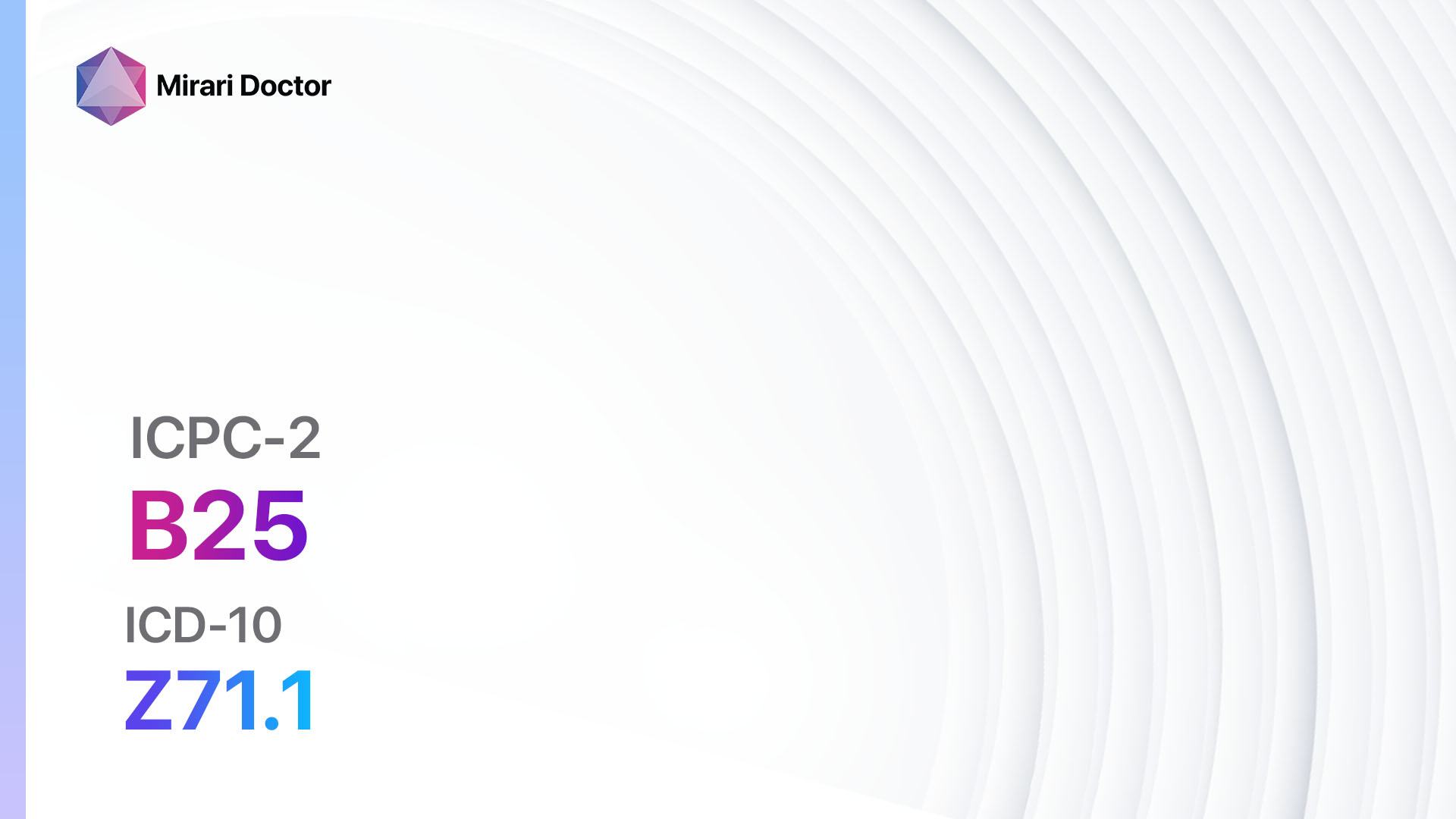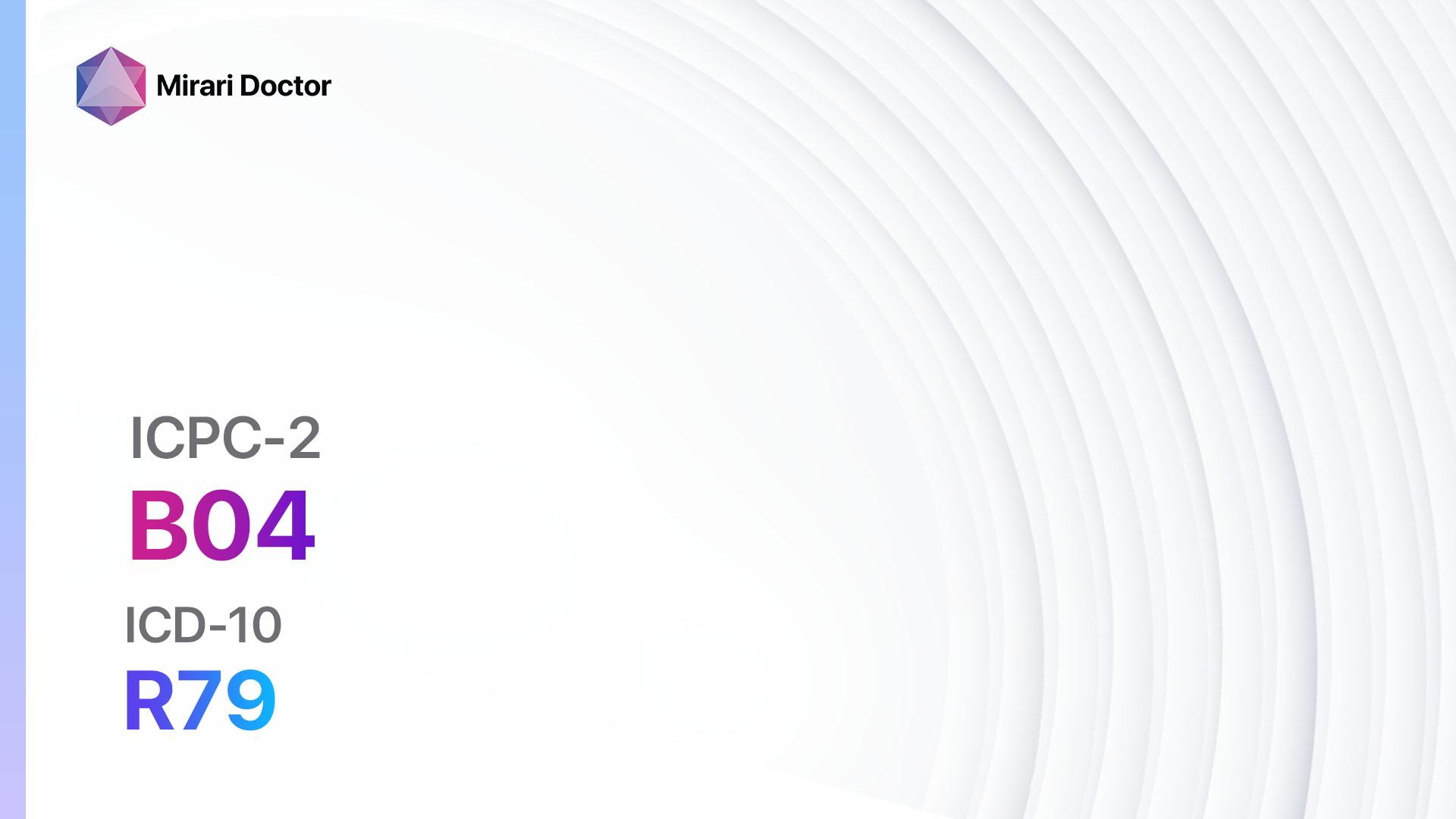
Introduction
Enlarged or painful lymph glands, also known as lymphadenopathy, can be a sign of an underlying infection, inflammation, or other medical conditions[1]. The aim of this guide is to provide a comprehensive overview of the diagnostic steps, possible interventions, and patient education for lymph gland(s) that are enlarged or painful.
Codes
- ICPC-2 Code: B02 Lymph gland(s) enlarged/painful[2]
- ICD-10 Code: R59.1 Generalized enlarged lymph nodes[3]
Symptoms
- Swollen lymph nodes in the neck, armpits, or groin[4]
- Tenderness or pain in the affected area[5]
- Redness or warmth over the lymph nodes[6]
- Fever or chills[7]
- Fatigue or malaise[8]
Causes
- Infections: Bacterial, viral, or fungal infections can cause lymphadenopathy. Common infections include strep throat, mononucleosis, and HIV[9].
- Inflammation: Inflammatory conditions such as rheumatoid arthritis or lupus can lead to swollen lymph nodes[10].
- Cancer: Lymphoma, leukemia, or metastatic cancer can cause lymphadenopathy.
- Immune disorders: Autoimmune diseases like rheumatoid arthritis or systemic lupus erythematosus can result in enlarged lymph nodes.
- Medications: Certain medications, such as phenytoin or allopurinol, can cause lymphadenopathy as a side effect.
Diagnostic Steps
Medical History
- Gather information about the patient’s symptoms, including the duration, location, and severity of the enlarged or painful lymph nodes.
- Ask about any recent infections, illnesses, or exposure to potential triggers.
- Inquire about other symptoms, such as fever, night sweats, weight loss, or fatigue.
- Assess the patient’s medical history, including any previous diagnoses or treatments for infections, autoimmune disorders, or cancer.
Physical Examination
- Perform a thorough physical examination, focusing on the lymph nodes in the neck, armpits, and groin.
- Palpate the lymph nodes to assess their size, tenderness, and consistency.
- Check for any signs of inflammation, such as redness or warmth, over the affected lymph nodes.
- Evaluate other areas of the body for additional signs or symptoms that may indicate an underlying cause.
Laboratory Tests
- Complete blood count (CBC): Assess the levels of white blood cells, red blood cells, and platelets. Abnormalities may indicate an infection or other underlying condition.
- Blood cultures: Identify the presence of bacteria or fungi in the bloodstream, which may suggest a systemic infection.
- Viral serology: Test for specific viral antibodies to determine if a viral infection is causing the lymphadenopathy.
- Erythrocyte sedimentation rate (ESR) or C-reactive protein (CRP): Measure the level of inflammation in the body.
- Monospot test: Detect antibodies specific to the Epstein-Barr virus, which causes mononucleosis.
- Fine-needle aspiration (FNA) biopsy: Extract a sample of cells from the enlarged lymph node for further analysis.
Diagnostic Imaging
- Ultrasound: Use sound waves to create images of the lymph nodes and surrounding structures. It can help determine the size, shape, and characteristics of the lymph nodes.
- CT scan: Provide detailed cross-sectional images of the lymph nodes and other organs to assess for any abnormalities or signs of cancer.
- MRI: Use magnetic fields and radio waves to produce detailed images of the lymph nodes and surrounding tissues.
Other Tests
- Lymph node biopsy: Remove a portion or the entire lymph node for further examination under a microscope to determine the cause of the lymphadenopathy.
- Flow cytometry: Analyze the characteristics of cells in the lymph node to identify specific types of lymphoma or leukemia.
- PET scan: Use a radioactive tracer to detect areas of increased metabolic activity, which can help identify cancerous lymph nodes.
Follow-up and Patient Education
- Schedule a follow-up appointment to discuss the results of the diagnostic tests and determine the appropriate treatment plan.
- Educate the patient about the importance of monitoring their symptoms and seeking medical attention if there are any changes or worsening of symptoms.
- Provide information about self-care measures, such as warm compresses, over-the-counter pain relievers, and rest, to alleviate discomfort associated with enlarged or painful lymph nodes.
- Discuss the need for regular follow-up appointments to monitor the lymphadenopathy and evaluate the effectiveness of the treatment.
Possible Interventions
Traditional Interventions
Medications:
Top 5 drugs for lymph gland(s) enlarged/painful:
- Antibiotics (e.g., Amoxicillin, Azithromycin, Cephalexin):
- Cost: Generic versions can be $3-$50/month.
- Contraindications: Allergy to antibiotics, liver or kidney disease.
- Side effects: Upset stomach, diarrhea, rash.
- Severe side effects: Severe allergic reactions, Clostridium difficile infection.
- Drug interactions: Warfarin, oral contraceptives.
- Warning: Finish the full course of antibiotics as prescribed.
- Nonsteroidal anti-inflammatory drugs (NSAIDs) (e.g., Ibuprofen, Naproxen):
- Cost: Generic versions can be $5-$20/month.
- Contraindications: Active peptic ulcer disease, history of gastrointestinal bleeding.
- Side effects: Upset stomach, heartburn, dizziness.
- Severe side effects: Gastrointestinal bleeding, kidney problems.
- Drug interactions: Aspirin, blood thinners.
- Warning: Take with food to reduce the risk of stomach upset.
- Antiviral medications (e.g., Acyclovir, Valacyclovir):
- Cost: Generic versions can be $10-$50/month.
- Contraindications: Allergy to antiviral medications, kidney disease.
- Side effects: Nausea, headache, dizziness.
- Severe side effects: Allergic reactions, kidney problems.
- Drug interactions: Probenecid, other antiviral medications.
- Warning: Start antiviral treatment as soon as possible for maximum effectiveness.
- Corticosteroids (e.g., Prednisone, Dexamethasone):
- Cost: Generic versions can be $5-$30/month.
- Contraindications: Active infections, uncontrolled diabetes.
- Side effects: Increased appetite, weight gain, mood changes.
- Severe side effects: Increased risk of infections, osteoporosis.
- Drug interactions: NSAIDs, anticoagulants.
- Warning: Taper the dose gradually when discontinuing corticosteroids.
- Antifungal medications (e.g., Fluconazole, Terbinafine):
- Cost: Generic versions can be $10-$50/month.
- Contraindications: Allergy to antifungal medications, liver disease.
- Side effects: Nausea, headache, rash.
- Severe side effects: Liver damage, allergic reactions.
- Drug interactions: Warfarin, oral contraceptives.
- Warning: Take the full course of antifungal treatment as prescribed.
Alternative Drugs:
- Analgesics (e.g., Acetaminophen, Tramadol): Provide pain relief for lymphadenopathy.
- Antihistamines (e.g., Loratadine, Diphenhydramine): Help reduce allergic reactions and associated symptoms.
- Immunosuppressants (e.g., Methotrexate, Cyclosporine): Used for autoimmune-related lymphadenopathy.
- Chemotherapy drugs (e.g., Cyclophosphamide, Doxorubicin): Administered for lymphoma or leukemia.
Surgical Procedures:
- Lymph node biopsy: Surgical removal of a lymph node for further examination to determine the cause of lymphadenopathy.
- Lymph node excision: Surgical removal of an enlarged or painful lymph node for diagnostic or therapeutic purposes.
Alternative Interventions
- Acupuncture: May help reduce pain and inflammation associated with lymphadenopathy. Cost: $60-$120 per session.
- Herbal supplements: Certain herbs, such as Echinacea or goldenseal, may have potential benefits for boosting the immune system. Cost: Varies depending on the specific supplement.
- Homeopathic remedies: Some homeopathic remedies, such as Belladonna or Mercurius solubilis, may be used to alleviate symptoms of lymphadenopathy. Cost: Varies depending on the specific remedy.
- Essential oils: Certain essential oils, such as tea tree oil or lavender oil, may have antimicrobial or anti-inflammatory properties. Cost: Varies depending on the specific oil.
- Mind-body techniques: Practices like meditation, yoga, or mindfulness can help reduce stress and support immune function. Cost: Varies depending on the specific practice.
Lifestyle Interventions
- Rest and relaxation: Getting adequate rest and reducing physical exertion can help support the immune system and promote healing. Cost: Varies depending on individual lifestyle choices.
- Healthy diet: Consuming a balanced diet rich in fruits, vegetables, whole grains, and lean proteins can provide essential nutrients for immune function. Cost: Varies depending on individual food choices.
- Hydration: Drinking plenty of water can help flush out toxins and support lymphatic drainage. Cost: Varies depending on individual water consumption habits.
- Stress management: Techniques such as deep breathing, meditation, or yoga can help reduce stress and support immune function. Cost: Varies depending on the specific practice.
- Warm compresses: Applying warm compresses to the affected lymph nodes can help reduce pain and inflammation. Cost: Varies depending on the availability of warm compress materials.
It is important to note that the cost ranges provided are approximate and may vary depending on the location and availability of the interventions.
Mirari Cold Plasma Alternative Intervention
Understanding Mirari Cold Plasma
- Safe and Non-Invasive Treatment:Mirari Cold Plasma is a safe and non-invasive treatment option for various skin conditions. It does not require incisions, minimizing the risk of scarring, bleeding, or tissue damage.
- Efficient Extraction of Foreign Bodies:Mirari Cold Plasma facilitates the removal of foreign bodies from the skin by degrading and dissociating organic matter, allowing easier access and extraction.
- Pain Reduction and Comfort:Mirari Cold Plasma has a local analgesic effect, providing pain relief during the treatment, making it more comfortable for the patient.
- Reduced Risk of Infection:Mirari Cold Plasma has antimicrobial properties, effectively killing bacteria and reducing the risk of infection.
- Accelerated Healing and Minimal Scarring: Mirari Cold Plasma stimulates wound healing and tissue regeneration, reducing healing time and minimizing the formation of scars.
Mirari Cold Plasma Prescription
Video instructions for using Mirari Cold Plasma Device – B02 Lymph gland(s) enlarged/painful (ICD-10:R59.1)
| Mild | Moderate | Severe |
| Mode setting: 1 (Infection) Location: 6 (Throat, Lymphatic & Thyroid) Morning: 15 minutes, Evening: 15 minutes | Mode setting: 1 (Infection) Location: 6 (Throat, Lymphatic & Thyroid) Morning: 30 minutes, Lunch: 30 minutes, Evening: 30 minutes | Mode setting: 1 (Infection) Location: 6 (Throat, Lymphatic & Thyroid) Morning: 30 minutes, Lunch: 30 minutes, Evening: 30 minutes |
| Mode setting: 2 (Wound Healing) Location: 6 (Throat, Lymphatic & Thyroid) Morning: 15 minutes, Evening: 15 minutes | Mode setting: 2 (Wound Healing) Location: 6 (Throat, Lymphatic & Thyroid) Morning: 30 minutes, Lunch: 30 minutes, Evening: 30 minutes | Mode setting: 2 (Wound Healing) Location: 6 (Throat, Lymphatic & Thyroid) Morning: 30 minutes, Lunch: 30 minutes, Evening: 30 minutes |
| Mode setting: 7 (Immunotherapy) Location: 1 (Sacrum) Morning: 15 minutes, Evening: 15 minutes | Mode setting: 7 (Immunotherapy) Location: 1 (Sacrum) Morning: 30 minutes, Lunch: 30 minutes, Evening: 30 minutes | Mode setting: 7 (Immunotherapy) Location: 1 (Sacrum) Morning: 30 minutes, Lunch: 30 minutes, Evening: 30 minutes |
| Total Morning: 45 minutes approx. $7.50 USD, Evening: 45 minutes approx. $7.50 USD | Total Morning: 90 minutes approx. $15 USD, Lunch: 90 minutes approx. $15 USD, Evening: 90 minutes approx. $15 USD | Total Morning: 90 minutes approx. $15 USD, Lunch: 90 minutes approx. $15 USD, Evening: 90 minutes approx. $15 USD |
| Usual treatment for 7-60 days approx. $105 USD – $900 USD | Usual treatment for 6-8 weeks approx. $1,890 USD – $2,520 USD | Usual treatment for 3-6 months approx. $4,050 USD – $8,100 USD |
 |
|
Use the Mirari Cold Plasma device to treat Lymph gland(s) enlarged/painful effectively.
WARNING: MIRARI COLD PLASMA IS DESIGNED FOR THE HUMAN BODY WITHOUT ANY ARTIFICIAL OR THIRD PARTY PRODUCTS. USE OF OTHER PRODUCTS IN COMBINATION WITH MIRARI COLD PLASMA MAY CAUSE UNPREDICTABLE EFFECTS, HARM OR INJURY. PLEASE CONSULT A MEDICAL PROFESSIONAL BEFORE COMBINING ANY OTHER PRODUCTS WITH USE OF MIRARI.
Step 1: Cleanse the Skin
- Start by cleaning the affected area of the skin with a gentle cleanser or mild soap and water. Gently pat the area dry with a clean towel.
Step 2: Prepare the Mirari Cold Plasma device
- Ensure that the Mirari Cold Plasma device is fully charged or has fresh batteries as per the manufacturer’s instructions. Make sure the device is clean and in good working condition.
- Switch on the Mirari device using the power button or by following the specific instructions provided with the device.
- Some Mirari devices may have adjustable settings for intensity or treatment duration. Follow the manufacturer’s instructions to select the appropriate settings based on your needs and the recommended guidelines.
Step 3: Apply the Device
- Place the Mirari device in direct contact with the affected area of the skin. Gently glide or hold the device over the skin surface, ensuring even coverage of the area experiencing.
- Slowly move the Mirari device in a circular motion or follow a specific pattern as indicated in the user manual. This helps ensure thorough treatment coverage.
Step 4: Monitor and Assess:
- Keep track of your progress and evaluate the effectiveness of the Mirari device in managing your Lymph gland(s) enlarged/painful. If you have any concerns or notice any adverse reactions, consult with your health care professional.
Note
This guide is for informational purposes only and should not replace the advice of a medical professional. Always consult with your healthcare provider or a qualified medical professional for personal advice, diagnosis, or treatment. Do not solely rely on the information presented here for decisions about your health. Use of this information is at your own risk. The authors of this guide, nor any associated entities or platforms, are not responsible for any potential adverse effects or outcomes based on the content.
Mirari Cold Plasma System Disclaimer
- Purpose: The Mirari Cold Plasma System is a Class 2 medical device designed for use by trained healthcare professionals. It is registered for use in Thailand and Vietnam. It is not intended for use outside of these locations.
- Informational Use: The content and information provided with the device are for educational and informational purposes only. They are not a substitute for professional medical advice or care.
- Variable Outcomes: While the device is approved for specific uses, individual outcomes can differ. We do not assert or guarantee specific medical outcomes.
- Consultation: Prior to utilizing the device or making decisions based on its content, it is essential to consult with a Certified Mirari Tele-Therapist and your medical healthcare provider regarding specific protocols.
- Liability: By using this device, users are acknowledging and accepting all potential risks. Neither the manufacturer nor the distributor will be held accountable for any adverse reactions, injuries, or damages stemming from its use.
- Geographical Availability: This device has received approval for designated purposes by the Thai and Vietnam FDA. As of now, outside of Thailand and Vietnam, the Mirari Cold Plasma System is not available for purchase or use.
References
- Mohseni, S., Shojaiefard, A., Khorgami, Z., Alinejad, S., Ghorbani, A., & Ghafouri, A. (2014). Peripheral lymphadenopathy: approach and diagnostic tools. Iranian journal of medical sciences, 39(2 Suppl), 158–170.
- World Organization of Family Doctors. (2016). ICPC-2: International Classification of Primary Care (2nd ed.). Oxford University Press.
- World Health Organization. (2019). International Statistical Classification of Diseases and Related Health Problems (11th ed.).
- Bazemore, A. W., & Smucker, D. R. (2002). Lymphadenopathy and malignancy. American family physician, 66(11), 2103–2110.
- Ferrer, R. (1998). Lymphadenopathy: differential diagnosis and evaluation. American family physician, 58(6), 1313–1320.
- Gaddey, H. L., & Riegel, A. M. (2016). Unexplained Lymphadenopathy: Evaluation and Differential Diagnosis. American family physician, 94(11), 896–903.
- Fijten, G. H., & Blijham, G. H. (1988). Unexplained lymphadenopathy in family practice. An evaluation of the probability of malignant causes and the effectiveness of physicians’ workup. Journal of family practice, 27(4), 373–376.
- Habermann, T. M., & Steensma, D. P. (2000). Lymphadenopathy. Mayo Clinic proceedings, 75(7), 723–732.//doi.org/10.4065/75.7.723
- Chau, I., Kelleher, M. T., Cunningham, D., Norman, A. R., Wotherspoon, A., Trott, P., Rhys-Evans, P., Querci Della Rovere, G., Brown, G., Allen, M., Waters, J. S., Haque, S., Maini, M., & Sumpter, K. (2003). Rapid access multidisciplinary lymph node diagnostic clinic: analysis of 550 patients. British journal of cancer, 88(3), 354–361.//doi.org/10.1038/sj.bjc.6600738
- Barton, L. L., Feigin, R. D., & Lins, R. (1973). Group B beta hemolytic streptococcal meningitis in infants. The Journal of pediatrics, 82(4), 719–723.//doi.org/10.1016/s0022-3476(73)80606-4
Related articles
Made in USA


